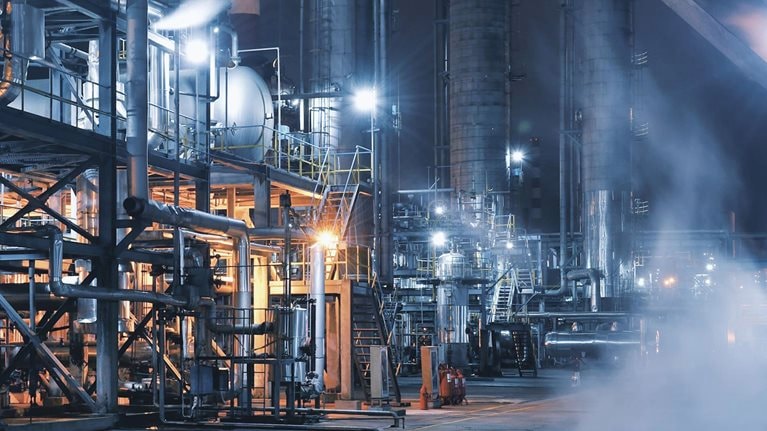Metals and mining companies are adapting to an operating environment in which water is highly regulated, experiences unforeseen supply shocks, and carries substantial social value. By 2024, water-operating expenses for these businesses are estimated to increase by a 1 to 4 percent compound annual growth rate (CAGR), with a 4 to 7 percent CAGR expected for water-capital spending. Consequently, these metals and mining companies have made significant investments—an estimated $15 billion in 2019 alone—to reduce water withdrawal and increase water efficiency in operations, as well as mitigate reputational risk.
Digital tools can optimize water-management operations—offering stability, reduced costs, and deferred expenditures for new capacity. This article describes the application of such tools in water treatment (see sidebar, “The five domains of water management”).
Central to sustainable operations is water reuse, wherein water is reclaimed after processing and treatment (to remove metals, reagents, or suspended solids). Reuse obviates the need for additional fresh water; it significantly reduces water-operating expenses and is critical to addressing low water availability in stressed areas. Anglo-American, for instance, has pledged to adopt techniques that will allow for more than 80 percent water reuse at their mining facilities, saving an estimated $15 million per year.1
Water treatment ensures that reclaimed water is comparable with fresh water and can be used in processing or discharged into an aquatic environment. Many industrial and municipal-wastewater companies use reactor-clarifier facilities for treatment because of their reduced cost relative to membrane-based technologies. In these facilities, water is treated in one or more reactors to induce sedimentation; the sediment is subsequently collected in large basins (clarifiers), yielding a top layer of clear water. Although effective, these systems are prone to upsets—commonly triggered by changes in flow, pH, or nutrient concentration2—which can require slowdowns or sometimes even shutdowns to remedy.
Online (IT/OT) sensors and valves—for flow, density, and turbidity—can help avoid upset conditions by enabling dynamic operation. Often, these components are combined into logical blocks within an automation system, allowing operators to choose set points that can be maintained without constant oversight. However, automation is minimal in many facilities, and control is relegated to watchful operators. When automation does exist, it is often built on influent- (incoming), effluent- (outgoing), and reagent-flow measurements, which may suffice to maintain steady-state operation.
Extending automation routines to incorporate changes in constituent or nutrient concentration can optimize plant performance and ensure proper stoichiometric ratios with reagents and sufficient settling time in the clarifier. Analyses for mass flux, mass balance, and kinetic rates have been published, but they require data that are often manually measured, such as the sediment-settling rate. Hence, these analyses are applied sparingly, often during the design phase or start-up.
Would you like to learn more about our Metals & Mining Practice?
One mining company recently endeavored to optimize the capacity and throughput of their reactor-clarifier treatment facility. The company processes approximately two billion gallons of influent per year and experiences upsets for approximately 15 to 20 percent of the overall operating time. Its facility, which contains three reactors and one clarifier, is designed to perform two tasks: to remove heavy metals from mineral processing and to reduce the concentration of total dissolved solids. Recent engineering upgrades had been made, including to the rake drive of the clarifier and to the flocculant system,3 but automation was modest and operation varied shift to shift as different operators assumed control.
As a first step, the company replaced defective or inadequate flow and pH sensors and then added new instrumentation to measure density. Next, it replicated the historical data from plant sensors to a cloud environment in near-real time to allow for processing at scale (exhibit). The organization then created additional procedures for regular sampling of manual measurements and constructed a cloud-based digital interface to record operator input. More than 50 of these data sources helped compute mass-balance and mass-flux formulae every 15 minutes, and a cloud-based dashboard loaded to a computer near the control room presented the outputs alongside operator recommendations. This transformation increased treatment capacity by 25 percent and eliminated plant upsets.

Such a journey is just one example of combining cloud-based processing with the wealth of data collected inside an automation network. Indeed, this type of digital transformation is already occurring across metals and mining companies (a 6.9 percent CAGR is predicted in mining automation alone until 2025).4 The complexity of modeling the hydrodynamics inside water operations makes it particularly suited for this approach; mass-flux computations are often too intense for programmable logic controllers—the heart of automation systems. Advanced-process-control systems are the next natural home,5 but they require investment in on-premises computing and storage resources, along with the personnel to maintain them. The cloud is tailor-made for these challenges: it is affordable, scalable, can be accessed by engineers across the company, and allows for replication across many facilities.
Overcoming complex water-management challenges is increasingly critical. Fittingly, the topic has emerged as a top priority on board agendas and for wider initiatives—such as the Water Resilience Coalition,6 a program led by global executives focused on collective action to preserve freshwater resources. Building and implementing digital solutions that promote water treatment benefits companies for both environmental and economic reasons. In the years to come, these investments could be the deciding factor in ensuring a company’s success.


